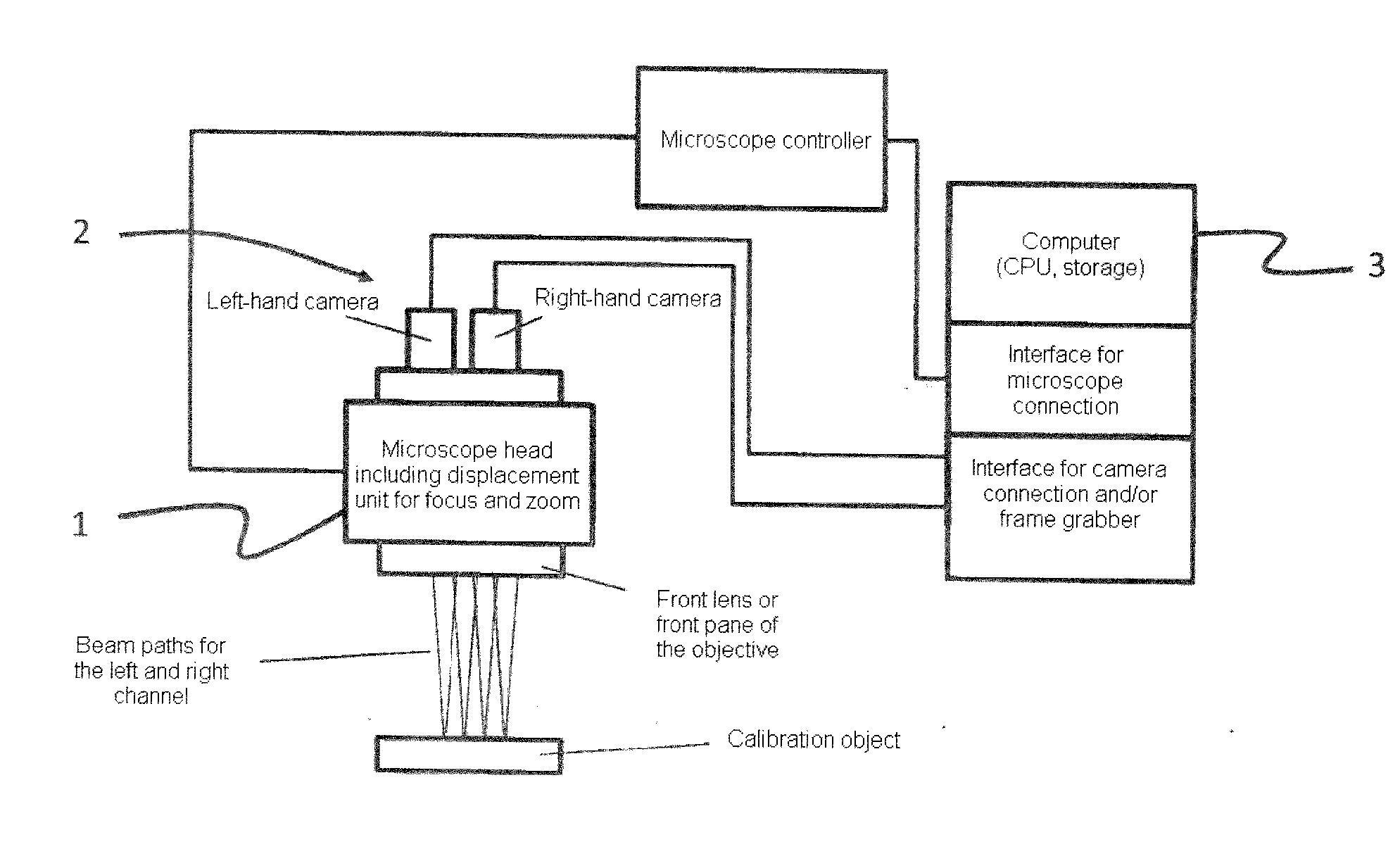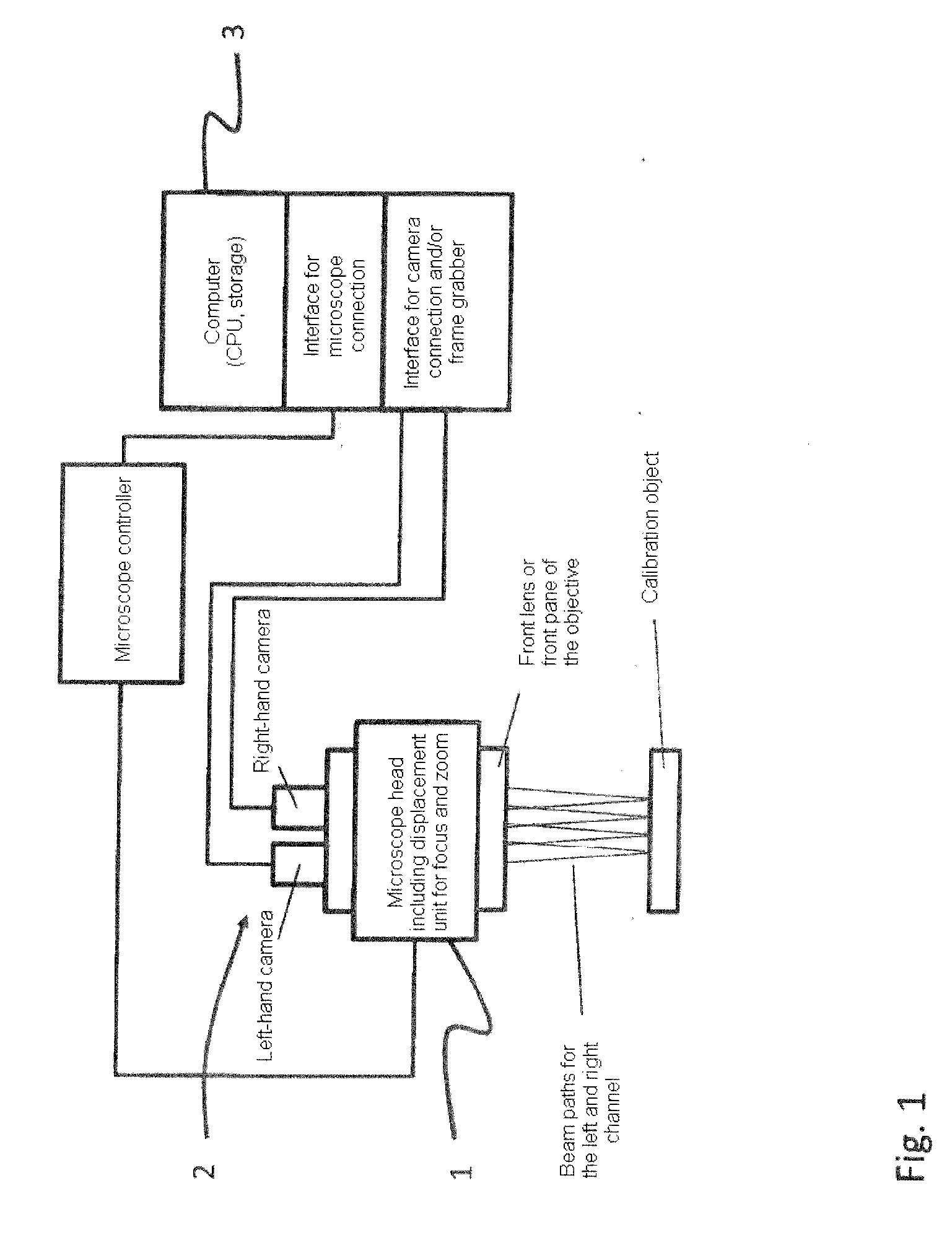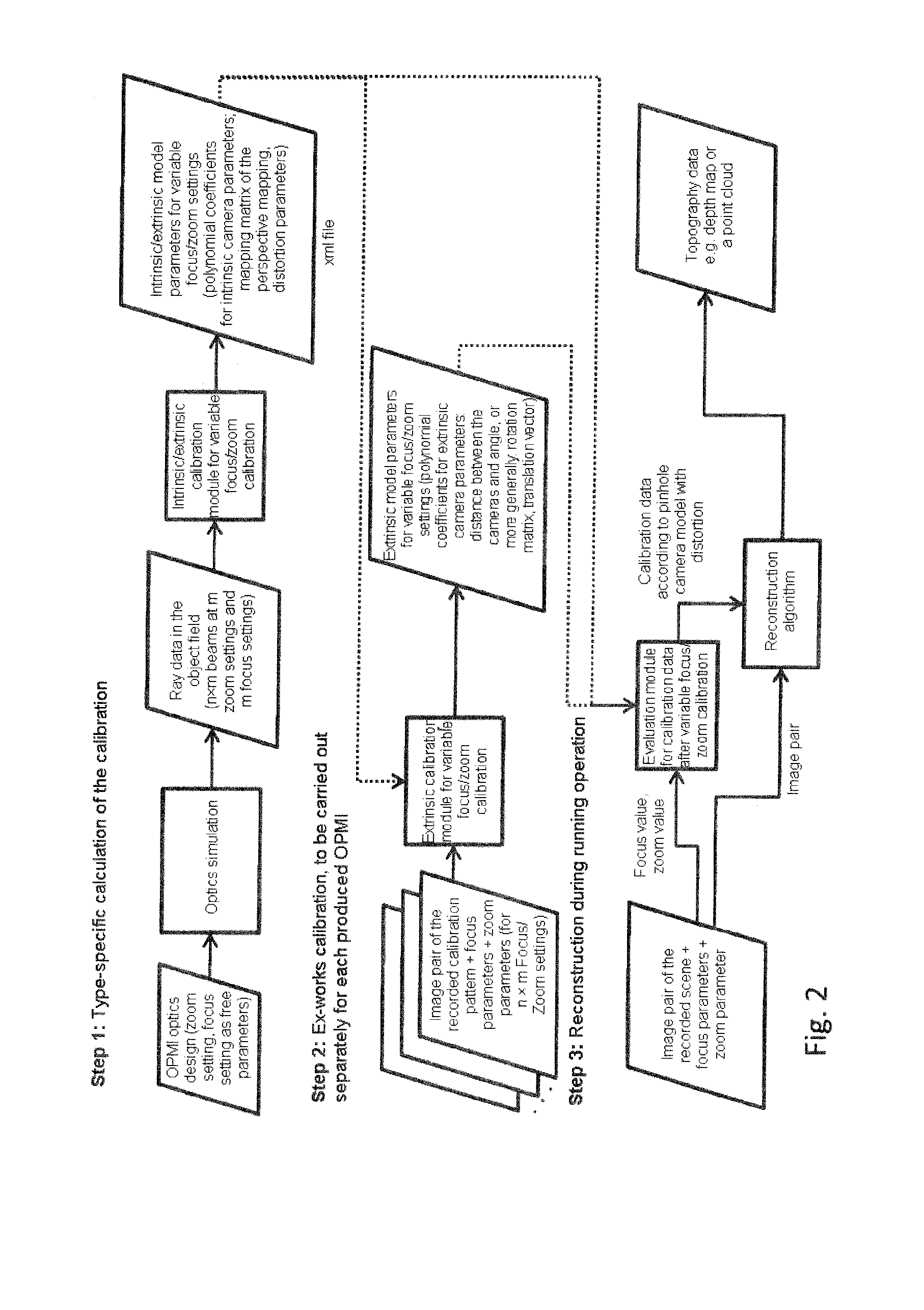Method for the image-based calibration of multi-camera systems with adjustable focus and/or zoom
a multi-camera system and focus/or zoom technology, applied in the field of image-based calibration of multi-camera systems, can solve the problems of low accuracy between the scanned positions still present, the method described in wilson is moreover very complicated, and the method described in wilson is susceptible to errors in some setting ranges, so as to achieve high accuracy of the calibrated beam path, good manageability, and good robustness
- Summary
- Abstract
- Description
- Claims
- Application Information
AI Technical Summary
Benefits of technology
Problems solved by technology
Method used
Image
Examples
Embodiment Construction
[0016]FIG. 1 depicts a surgical microscope system with a stereo surgical microscope 1 and a stereo camera system 2. The surgical microscope system includes a computer 3 with a data link to the surgical microscope, for example in the form of a frame grabber or a direct wired connection, or by way of a computer interface such as GigE or USB.
[0017]FIG. 2 depicts a flowchart of a first embodiment for a method according to the invention. In the method, data from the optics simulation, settings of the surgical microscope and real image recordings using the surgical microscope to be calibrated are combined into one workflow, in which the optics simulation forms the basis for the intrinsic calibration, that is, the determination of the camera parameters for the pinhole camera model and the parameters of the distortion mapping, in order thus to increase the accuracy and robustness of a beam reconstruction.
[0018]To this end, focus and zoom positions of the surgical microscope are established ...
PUM
 Login to View More
Login to View More Abstract
Description
Claims
Application Information
 Login to View More
Login to View More - R&D
- Intellectual Property
- Life Sciences
- Materials
- Tech Scout
- Unparalleled Data Quality
- Higher Quality Content
- 60% Fewer Hallucinations
Browse by: Latest US Patents, China's latest patents, Technical Efficacy Thesaurus, Application Domain, Technology Topic, Popular Technical Reports.
© 2025 PatSnap. All rights reserved.Legal|Privacy policy|Modern Slavery Act Transparency Statement|Sitemap|About US| Contact US: help@patsnap.com



